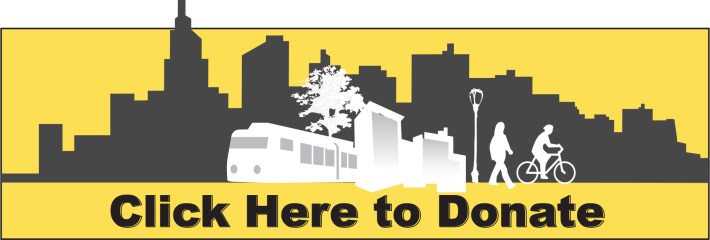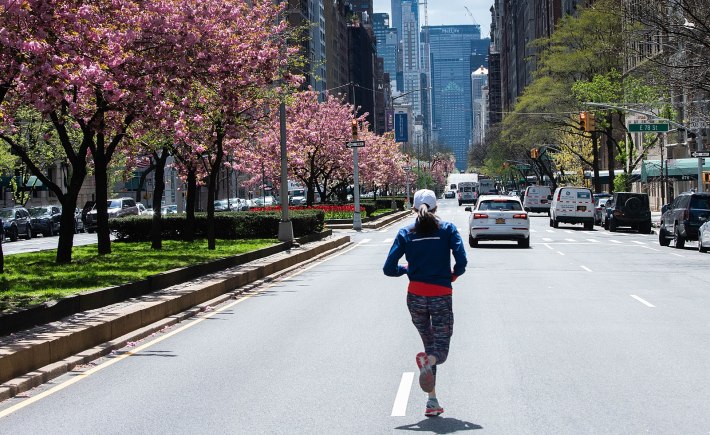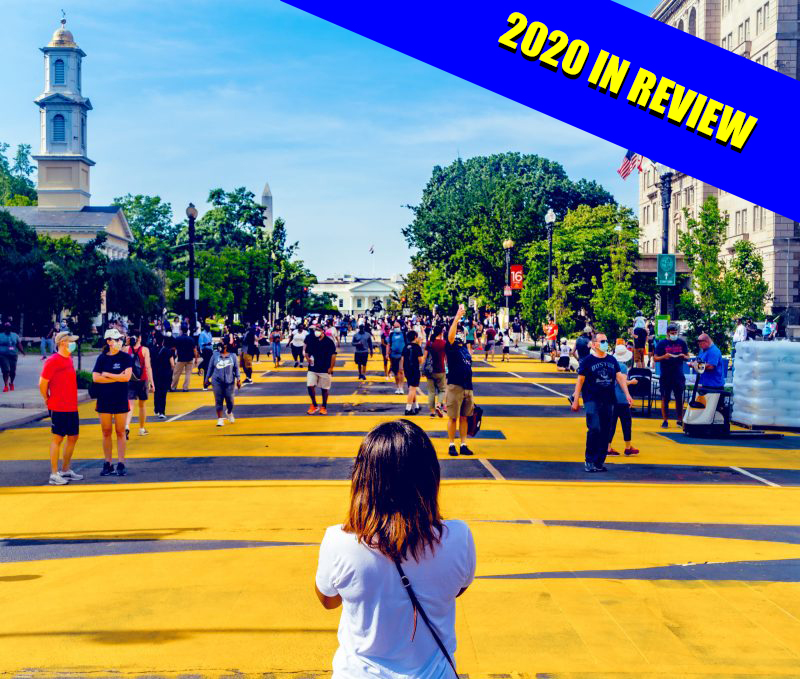
Let's pause for a second and imagine that we could go back in time to Dec. 31, 2019, and tell sustainable transportation advocates what this year held in store for our movement.
Imagine how those hypothetical advocates would react if you told them that, within a few months, roughly two-thirds of all car traffic would abruptly vanish from U.S. streets.
Imagine what our former selves would say you if you told them that such a rapture would prompt countless cities across the country to transform roadways that used to be dedicated exclusively to private vehicles into places to play, move, eat, shop, learn, and more.
Then imagine their faces if you told them that countless other cities would do nothing at all, even as those wide-empty streets encouraged the drivers who remained to speed out of control — forcing per-mile car crash rates to a terrifying, 15-year high.

Could the 2019 human mind even comprehend the idea of an overnight 75-percent drop in transit ridership — much less the idea that federal government would give agencies less than half of what they needed to survive that kind of apocalypse?
What about a massive increase in biking in 88 of 100 American cities that would leave bike shops sold out for months — nevermind the idea that the biggest booms would happen in cities like Toledo?
And what if you told those sweet, summer children that all of this would happen before May? And that by the end of that month, the police murder of a Minneapolis man in a parking lot would transform our streets yet again — this time, into a space for protests the scale of which the world has likely never seen?
Would those hypothetical advocates be surprised that those protests would themselves spark a long-overdue conversation in their own movement about how our pandemic-era transportation choices — and all our choices — can either reinforce or dismantle the structures of White supremacy?
(That conversation was really only overdue among White advocates; BIPOC, of course, have been having it all along.)

To say that 2020 was an unbelievable year in the sustainable transportation world would be a profound understatement — and to break it down into a neat list of wins and losses is an impossible task. Because in 2020, every "win" occurred against a backdrop of vast death, suffering, and injustice, and every "loss" happened amidst a surge in mutual aid, fierce advocacy, and stunning resilience at the community level.
The long-term legacies of the COVID-19 era probably won't be completely known for a generation. But what we do know, even from the relatively low vantage point of looming New Year's Eve, is this: 2020 has challenged our notions of what is possible for American transportation more profoundly than any year since the advent of the automobile itself.
Because despite it all, 2020 — for all the truly awful things it threw at us — was also the year that the first major city in the world reported that it had achieved a full 12 months with zero roadway deaths, which was followed by news that another international capital had done it, too.
This utter garbage-fire of a year somehow proved that the white collar (and usually, white-skinned) workplace commuter absolutely doesn't have to be at the center of our transportation decisions — and that building neighborhoods where driving is truly optional for everyone is not only possible, but crucial to our very survival.
The entropic cesspool we called 2020 also revealed that you don't really have to send every single voter to the polls in a private car to hold an election — and that even when they're barely riding transit much themselves, voters will still approve almost every ballot measure that promises to invest in sustainable, mass modes. (And that even includes probably the single largest local transit package in U.S. history.)
Those same voters also elected the first traffic violence widower to the presidency this year — in part because he committed to putting high-quality transit within reach of every American city-dweller. (And then he backed it up by choosing a Department of Transportation secretary who, if he had his way, would increase funding to the Federal Transit Administration by a factor of 13.)
Joe Biden Visits Graves of First Wife & Baby Daughter on Anniversary of Their Christmas Crash https://t.co/ndqI54KDMH
— People (@people) December 18, 2020
Of course, a lot of things didn't change much at all in 2020.
Despite his personal tragedy (and his passion for transit), Amtrak Joe is still sticking to the Democratic party line that electric vehicles are just as important to ending climate change as mode shift (even though scientists pretty much quashed that myth this year, too.)
U.S. car buyers are still setting ever-higher records for truck and SUV sales, even with the economy in freefall.
At least for one more year, we're still stuck with a federal infrastructure package that underfunds the greenest, safest, cheapest modes, and overfunds driving.
At least for now, e-taxi companies are still given massive subsidies to exploit their workers and promote the dirtiest mode of transportation on our streets.
Racist urban-renewal-redux highway projects marched on this year, undeterred by plummeting state revenues. The impacts of environmental racism have literally never been more visible, and we're still doing too little to stop it. And despite the astonishing efforts of BIPOC advocates and their allies around the world, our policies continue to all but ensure that Black residents of U.S. cities will be terrorized and killed by their own police on our roadways, and everywhere else.
But if 2020 showed us how easily our world can change, 2021 should be the year where we begin to radically reimagine what our streets could be — from the way we police them, to how we build them, and who we put at the center of our planning decisions, and at the head of our planning departments themselves.
We've got at least a few more months in quarantine. Let's take this time to dig deep, listen hard to the most unheard, and make sure we're ready to do next year right.






